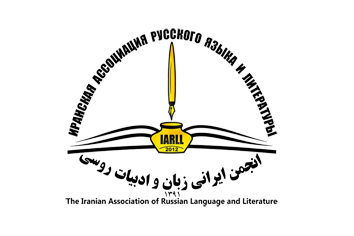VALUE CONTENT OF THE COMPLEX OF MOTIVES OF DAWN AND DUSK IN YA. POLONSKY’S LYRICS
DOI:
https://doi.org/10.61186/iarll.20.135Keywords:
Ya. Polonsky, Lyrics, The Complex of Motives of Dawn and Dusk, Semantics, Functioning, Value MeaningsAbstract
The lyrical works of Ya. Polonsky, thematically related to the motives of the morning and evening dawn, are analyzed using a value approach. The works of the early, mature and late periods of the poet's creativity are involved in the study. In the course of comparative consideration of the selected group of texts, semantic and value oppositions structuring the picture of the world depicted by the author are determined. It is established that the motivic complex of the morning and evening dawn acquires value content in the poetic world of the author. The dynamics of the author's value attitudes is determined. In the early lyrics, life values are reduced to romantic unity: "youth–freedom–love–joy–light". A mature poet is looking for spiritual meanings of being. The morning and evening dawn serve to express a sense of disappointment in society (daylight fading) and hope for its liberation from false values (enlightenment). In the poems of late lyricism, the Motives of Dawn and Dusk include the value of the spiritual renewal of humanity in the gospel sense.
Extended abstract:
The lyrical works by Ya. Polonsky is studied using a value approach and thematic analysis. The aim of the study is to clarify the issue of the functioning of the complex of the motives of dawn and dusk in the creative evolution of the author. The poet’s works of the early, mature and late periods serve as the basis for the analysis. The poet’s works of the early, mature and late periods serve as the basis for the analysis. In the course of a comparative study of three groups of the selected texts, semantic and value oppositions structuring the poetic worldview are determined. In the works that belong to the early lyrics (“Evening”, 1843; “Riding”, 1844; “Morning”, 1845; “Oh, How Good it is on the Balcony, My Dear! Look ...”, 1845). The oppositions are highlighted as “still / moving”, “cramped / spacious”, “temporary / eternal”. The romantic ideal of a lyrical subject is determined by the unity of concepts: “youth-freedom-love-joy-light”. The second group of the analyzed poems (“Already above the Spruce Forest behind the Thorny Peaks…”, 1844; “Song”, 1865; “Allegory”, 1876) indicates the poet’s search for the spiritual meaning of existence. The texts are united by the author's reflection and the value of oppositions, such as “good / evil”, “danger / salvation”, “past / new day”. The lyrical subject regrets the inaccessibility of the dream, but does not lose hope for the future (the motive of insight). The images of the East and the new day receive a symbolic meaning of the renewal of life. This topic is unfolded in the poems of mature and late lyrics by Polonsky (“Dreams”, 1865-1860; “Whence?!.”, 1870; “Come the Crowd Cowardly Wandering ...”, 1886). They are united by oppositions: “sleep / awakening” and “practical mind / spiritual knowledge”. The image of the dawn is associated with the spiritual renewal of humanity in the evangelic sense. In the course of the analysis, it has been established that in Polonsky’s poetic world the motive complex of dawn and dusk is filled with value content, which is dynamically evolving from the romantic preference for the ideal of reality to the disappointment in society and from the criticism of the poet's contemporary spiritual delusions to the gospel meaning of the renewal of the world. The religious and philosophical subtext and symbolic interpretation of archetypal and romantic topos allow us to include Polonsky's lyrics in the context of Russian pre-symbolism of the 1870s-1880s.
Downloads
Published
How to Cite
Issue
Section
License
Copyright (c) 2022 Issledovatel'skiy Zhurnal Russkogo Yazyka i Literatury

This work is licensed under a Creative Commons Attribution 4.0 International License.
![]()
"Creative Commons Attribution 4.0 International (CC-BY 4.0)"


